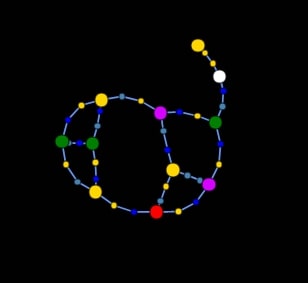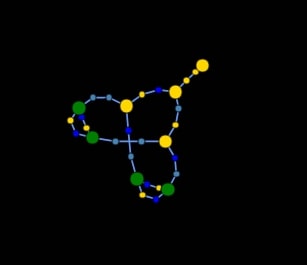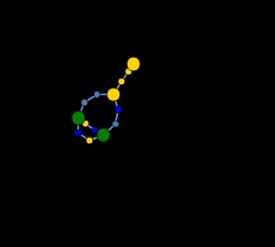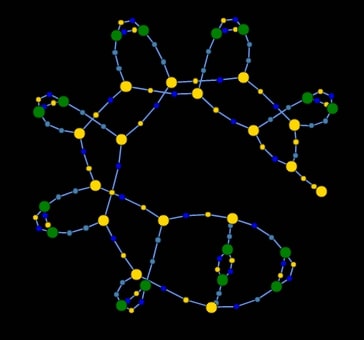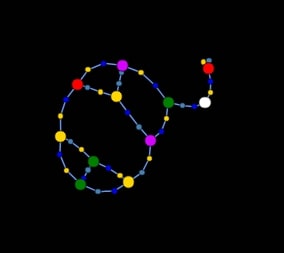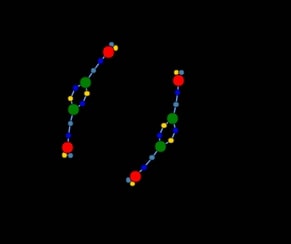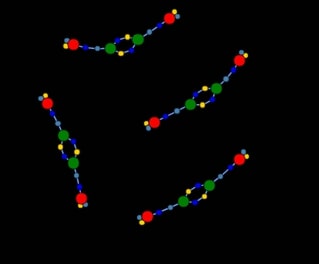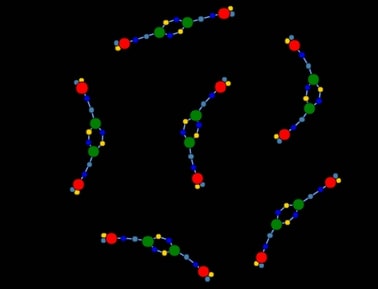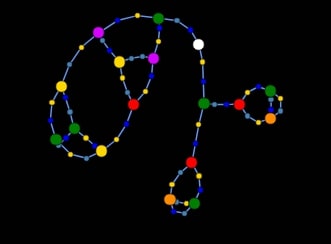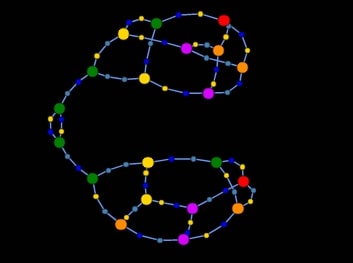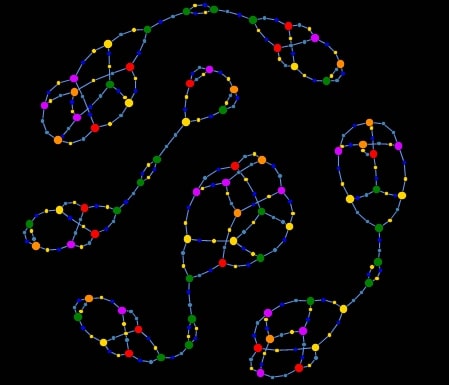Dietz Replicator © Marius Buliga (2022), https://mbuliga.github.io/quinegraphs/jdreplicator.html
All chemlambda projects
The Dietz replicator (aka JD replicator) was found after random searches in the 9 billion family of graphs which you can also explore.
It is a chemlambda molecule with the property that it produces a finite, but random length string of application A and fanout FOE nodes.
It looks like this:
It has the code:
If we let it reduce randomly, it can take random shapes, like this:
It can be used with any molecule obtained from a lambda term. Mind that the Dietz replicator does not represent a lambda term!
It will produce a finite but random number of pairs of the initial template, even if the template molecule itself reduces in the same time.
Indeed, let's glue the Dietz replicator to the 1-node molecule which represents the identity lambda term. The molecule obtained has the code:
and it looks like this:
If we let it reduce randomly, it produces a random number of pairs of Id molecules, like this:
The same can be tried with the Omega combinator molecule. The molecule obtained has the code:
and it looks like this:
Differently from the Id molecule, the Omega molecule is a chemlambda quine. That means it reduces forever, it does not have a final shape.
If we let the Dietz replicator + Omega to reduce randomly, it produces a random number of pairs of Omega molecules, which are all in various stages of reduction themselves, and they will continue to reduce forever! Snapshots look like like this:
The ability of this replicator is that it produces copies of active molecules, while they continue to function. This is a far harder to achieve property than just replication. But Nature can do this, for sure: living cells reproduce while they also continue to have a metabolism. In Nature there is no clear separation between functioning (metabolism) and pure replication.
You can run the simulations by yourself, just use the lower part of this page.
This page is a response to the kind request of Joel Dietz, the creator of metalambda.org, for his metaseminar 0 (link to be updated if transcript available).
